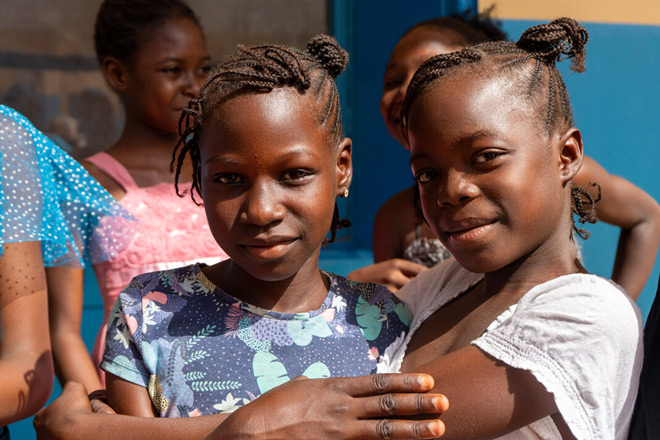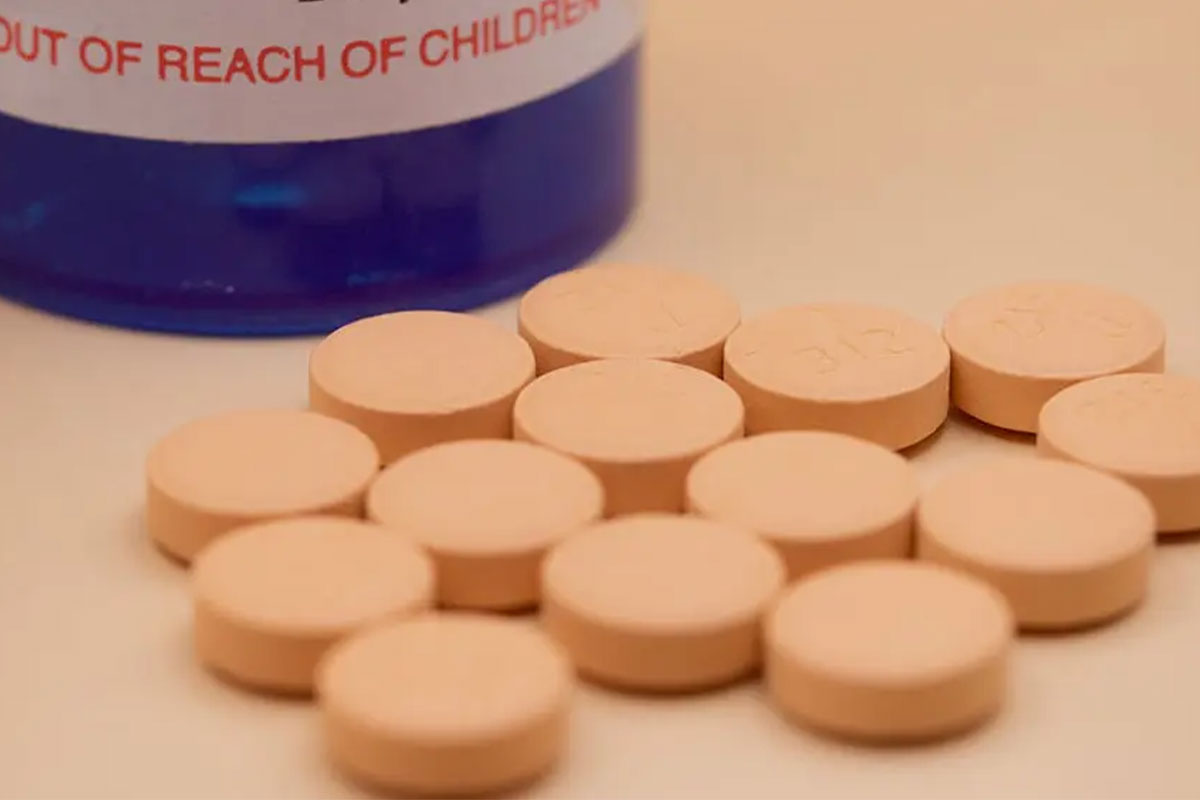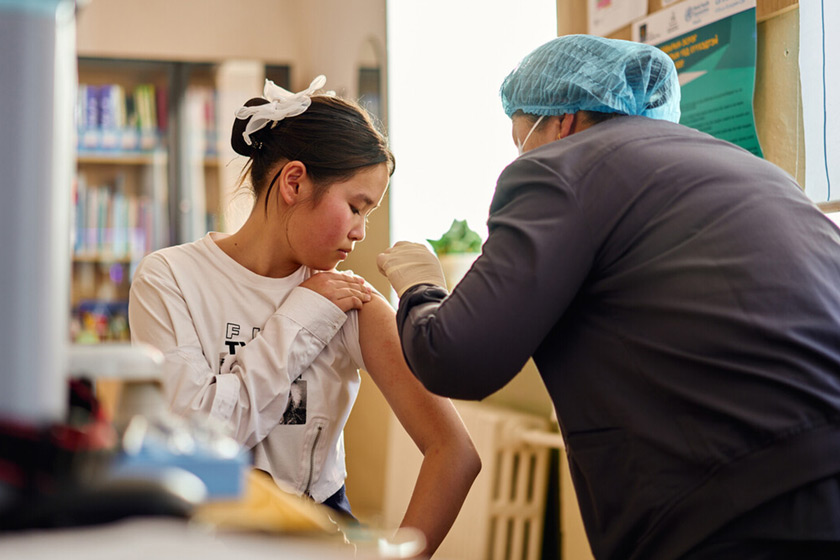Building resilient health systems through immunisation: protecting African children one vaccine at a time
Despite significant progress over the past two decades, African nations remain vulnerable to vaccine-preventable disease. Now is the time for investment.
- 1 May 2025
- 4 min read
- by Chioma S. Nwachukwu , Kelechi Uzor , Edwinah Orowe , Amal Abikar , Nadiah Rusli , Kay Atanda

Fifty-one years after the launch of Expanded Programme on Immunization (EPI), vaccines continue to be recognised as one of the most cost-effective ways to prevent illness and death from infectious diseases.
In many communities, especially in low- and middle-income countries, vaccination programmes have drastically reduced neonatal and infant mortality – allowing children to grow into healthy and productive adults.
Powering a secure and prosperous future through immunisation
Since 2000, through partnerships with 40 African countries, Gavi has disbursed over US$ 11.9 billion and reached more than 438 million children with routine immunisation, averting at least 11.1 million deaths.
As a result of these efforts, today, a child born in a Gavi-supported country is 70% less likely to die from a vaccine-preventable disease (VPD) before their fifth birthday.
Immunisation remains one of the most impactful global public goods in terms of investment returns, with each US$ 1 invested resulting in US$ 54 returns in wider economic benefits.
In addition to reducing the burden of disease in Africa, routine immunisation programmes avert treatment costs from already stretched health systems. This creates the much-needed fiscal space required for countries to strengthen their health infrastructure, invest in cutting-edge medical research and development, and fund other public goods such as education and access to clean water.
Indeed, immunisation remains one of the most impactful global public goods in terms of investment returns, with each US$ 1 invested resulting in US$ 54 returns in wider economic benefits.
Now is the time to scale immunisation investments
While significant progress in child health has been recorded, Africa remains vulnerable to vaccine-preventable diseases.
According to the World Health Organization (WHO), 20% of African children still lack access to routine immunisation. Consequently, every year, over 30 million children under five years old still suffer from vaccine-preventable diseases (VPDs) on the continent – resulting in over 500,000 deaths from VPDs, an estimated 58% of all VPD-related deaths in the world.
This is the time to invest more resources in immunisation. For the period from 2026–2030, Gavi aims to raise at least US$ 9 billion in additional resources to immunise at least 500 million more children – essentially averting an additional 8–9 million deaths, many of which will be children in Africa.
This will also enable Gavi and its Alliance partners to respond to multiple disease outbreaks in the African region, thereby deepening health resilience in many vulnerable communities, while generating broader economic benefits from increased productivity.
A continued investment in Africa’s immunisation programmes remains crucial in combatting deadly diseases such as malaria and cervical cancer.
The coming years will be marked by vaccine innovation, as many countries continue to leverage Gavi support to introduce the novel malaria vaccine while simultaneously revitalising their HPV vaccination programmes.
Have you read?
Specifically, Gavi is working with more than 30 countries that have expressed interest in introducing the novel malaria vaccine. This work has seen significant progress: currently, a total of 20 countries have introduced malaria vaccines into their routine immunisation programme, and an additional 4 countries plan to do so by the end of 2025.
Furthermore, over 29 countries in Africa have introduced the HPV vaccine, which is known to prevent up to 95% of cervical cancer cases. This is a monumental step in accelerating the elimination of cervical cancer.
As a trusted partner, Gavi will continue to collaborate with supported countries in Africa to build strong and equitable immunisation programmes through a substantial focus on health system strengthening and enhancing country-level capacity to implement sustainable immunisation programmes.
The support will also enable implementing countries to deliver routine vaccines efficiently by scaling and maximising investments in key areas such as human resources, data analytics, service delivery and supply chain management.
Country ownership and collaboration will remain crucial
Gavi’s model is underpinned by country ownership and partnership.
The Alliance’s co-financing policy means that countries contribute to the cost of Gavi-supported vaccines by financing some of the required vaccine doses.
This strategy embeds country ownership at the heart of Gavi’s operations, ensuring that implementing countries transition sustainably from Gavi support to financing their own vaccine doses.
This collaboration has worked well and even in the face of fiscal challenges, climate change, conflict and instability, most Gavi-supported countries have maintained or increased domestic resources for co-financing of Gavi-supported vaccines.
Since the introduction of Gavi’s co-financing policy in 2008, the total contribution from supported countries has risen steadily – bringing their total contribution to US$ 1.5 billion in 2022.
Between 2022 and 2023, contributions from Gavi implementing countries towards the co-financing of supported vaccines increased from US$ 162 million to a record US$ 215 million – a testament to country ownership and the long-term financial sustainability of Gavi-supported programmes.
Overall, Gavi is committed to working with international partners, in alignment with the Lusaka Agenda to ensure complementarity and to better support stronger, more integrated country-level planning and domestic resource mobilisation that scales the impact of national health and immunisation strategies.
These efforts will ensure enhanced investments in primary healthcare and improve Africa’s regional health security outlook.





